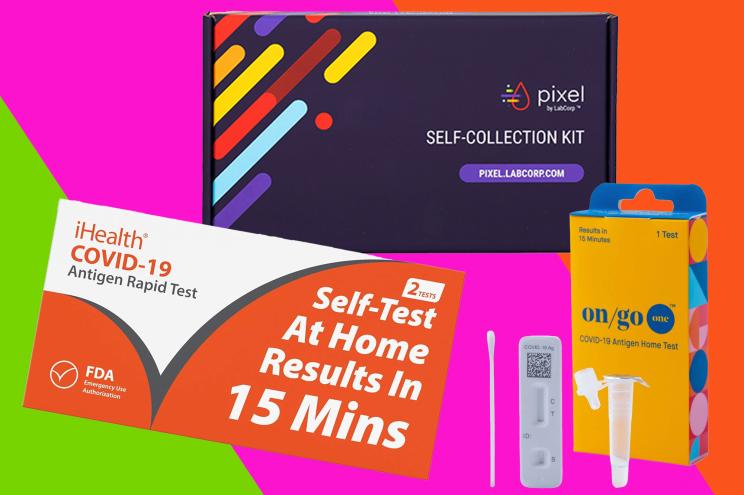COVID-19 — it’s still a thing, which means it’s always a good idea to have one of the best at-home COVID test kits around.
- Best Overall: iHealth COVID-19 Antigen Rapid Test (2-Pack)
- Best Under $10: Flowflex COVID-19 Antigen Home Test
- Best FSA/HSA: Pixel by LabCorp COVID-19 Test
- Best Single Test: On/Go At-Home COVID-19 Rapid Antigen Self-Test
- Best 2-Pack: BinaxNOW COVID‐19 Antigen Self Test (2-Count)
According to the CDC, COVID-19 self-tests — also known as at-home tests or over-the-counter (OTC) tests — are one of many risk-reduction measures, along with vaccination, masking and physical distancing, that protects you and others from the spread of COVID-19, even though it’s no longer mandated in most regions.
While at-home covid tests were nearly impossible to find back in 2020, it’s easier than ever in 2025. They’re available at Amazon, Walmart and other online retailers, so you can add a kit to your cart right along with your probiotics and other wellness must-haves.
Where to buy at-home COVID test kits
Best Overall: iHealth COVID-19 Antigen Rapid Test (2-Pack)
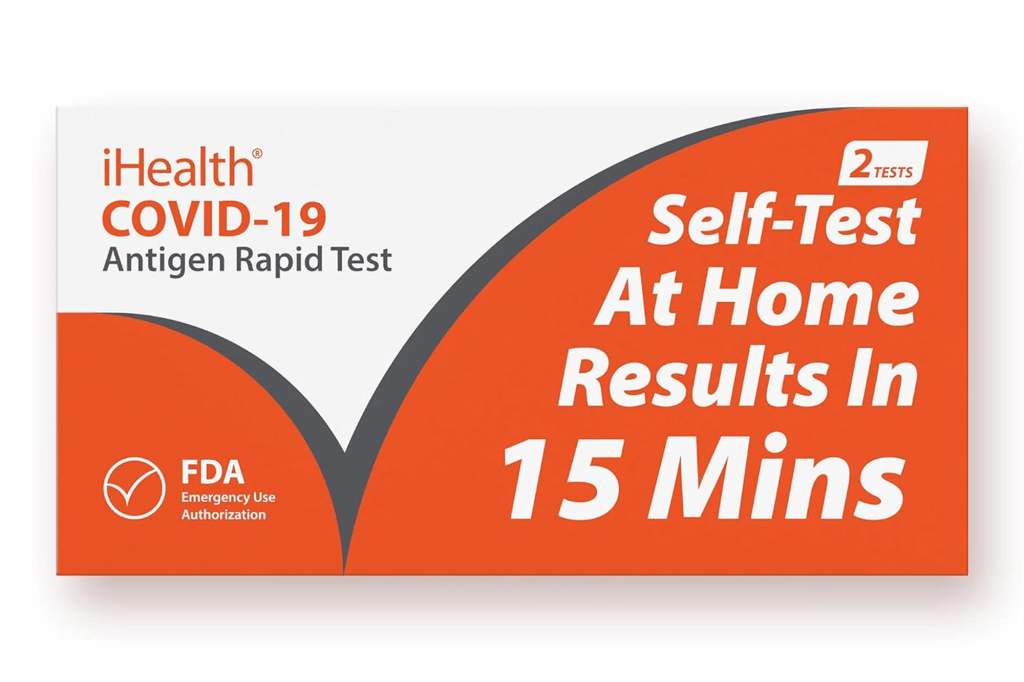
Pros:
- Two tests per box
- PU foam swab for quick absorption
- Results in 15 minutes
- Easy-to-read results window
Cons:
- The product expiration date. According to reviews for 2024, the test are still viable
This product comes with two rapid antigen tests that are simple to use.
Prepare the testing materials, collect and process the sample, then receive your results in just 15 minutes.
Best Under $10: Flowflex COVID-19 Antigen Home Test
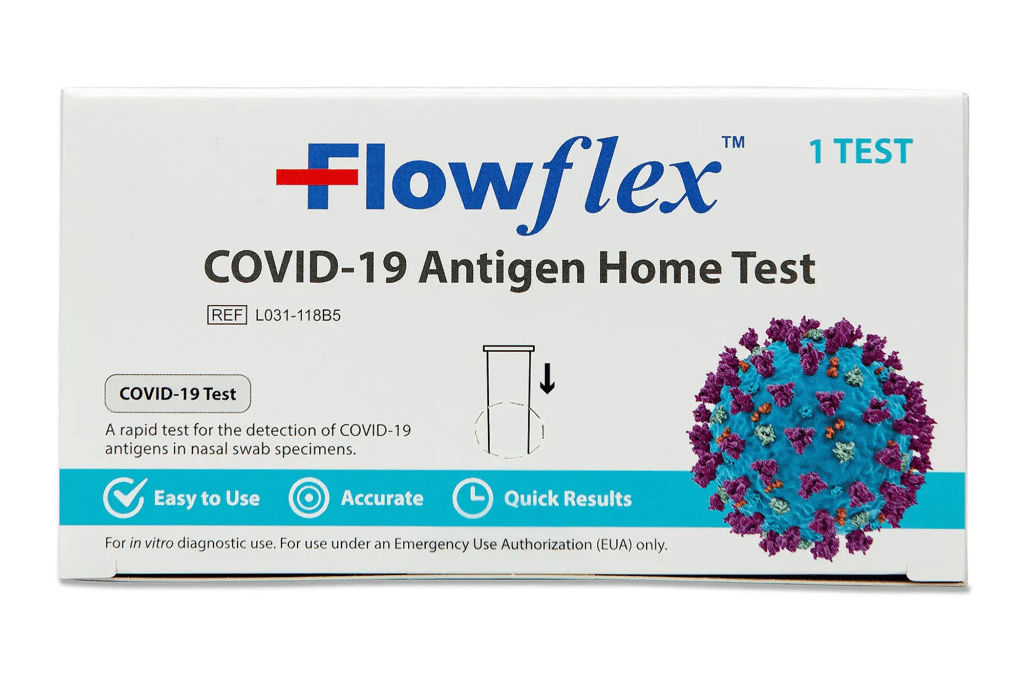
Pros:
- FDA-authorized
- Good until June 2025
Cons:
- Unclear how many varients it tests for
The FlowFlex Covid-19 Antigen Home Test is selling for as low as $8, an accurate, easy to use and quick-result option to buy online.
This FDA-authorized Antigen test requires only one test to get results in 15 minutes using a nasal swab.
Best FSA/HSA: Pixel by LabCorp COVID-19 Test
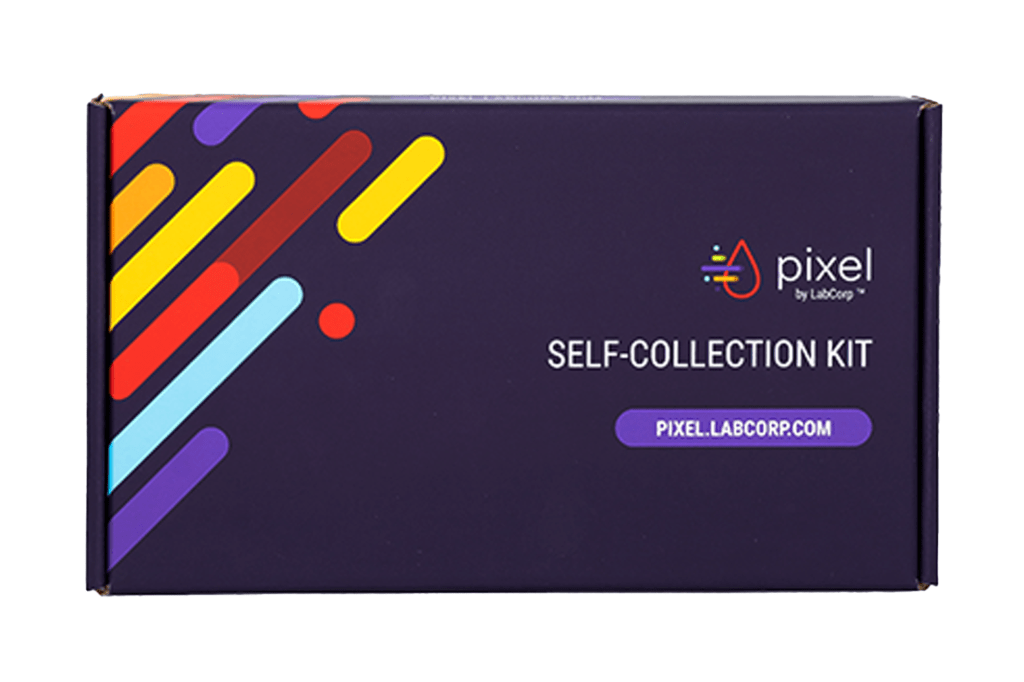
Pros:
- Detects known SARS-CoV-2 Variants, including Delta and Omicron
- Lab results without leaving your home
Cons:
- Have to send in your results
If you want a test that’s even more reliable but you don’t want to leave the comfort of your home, an at-home PCR test is the way to go. The Pixel by LabCorp kit is a great option that gets you results within 1-2 business days (on average) after receiving your nasal swap sample via FedEx.
Best Single Test: On/Go At-Home COVID-19 Rapid Antigen Self-Test
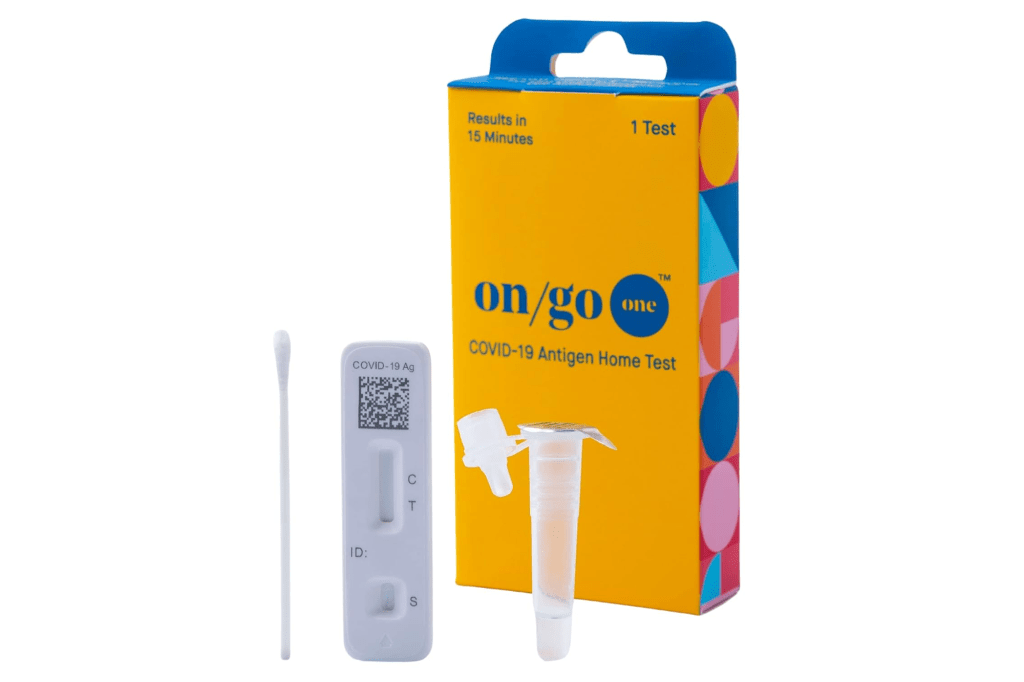
Pros:
- Fast results
- Detects all major COVID-19 variants
Cons:
- Must check the app for an accurate expiration date
If you work best with technology, On/Go is the COVID-19 self-test for you. This kit gives you 95% accurate results in just 15 minutes using the companion mobile app, which guides you through each step of the process — from sample collection to results.
Best Two-Pack: BinaxNOW COVID‐19 Antigen Self Test (2-Count)
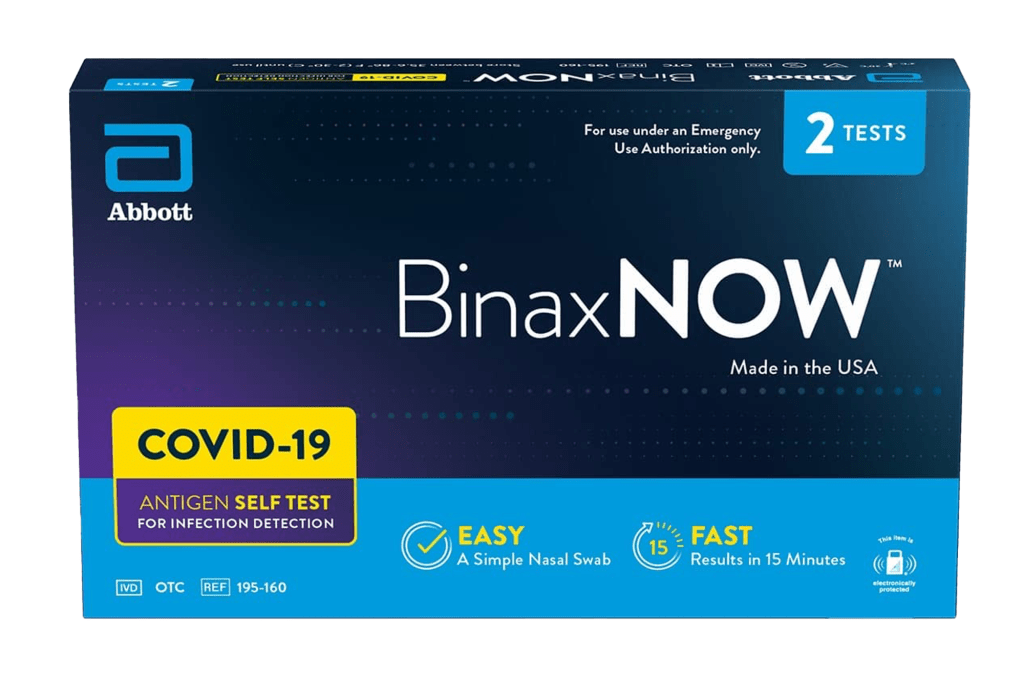
Pros:
- FSA/HSA eligible
- Test for multiple variants, including Delta and Omicron
Cons:
- Some reviewers mention having their order damaged in the shipping process
Get your test results in 15 minutes or less with a simple nasal swab in the comfort and convenience of your home. BinaxNOW COVID-19 Antigen Self Test is available under FDA Emergency Use Authorization.
Best Rapid: QuickVue At-Home COVID-19 Test
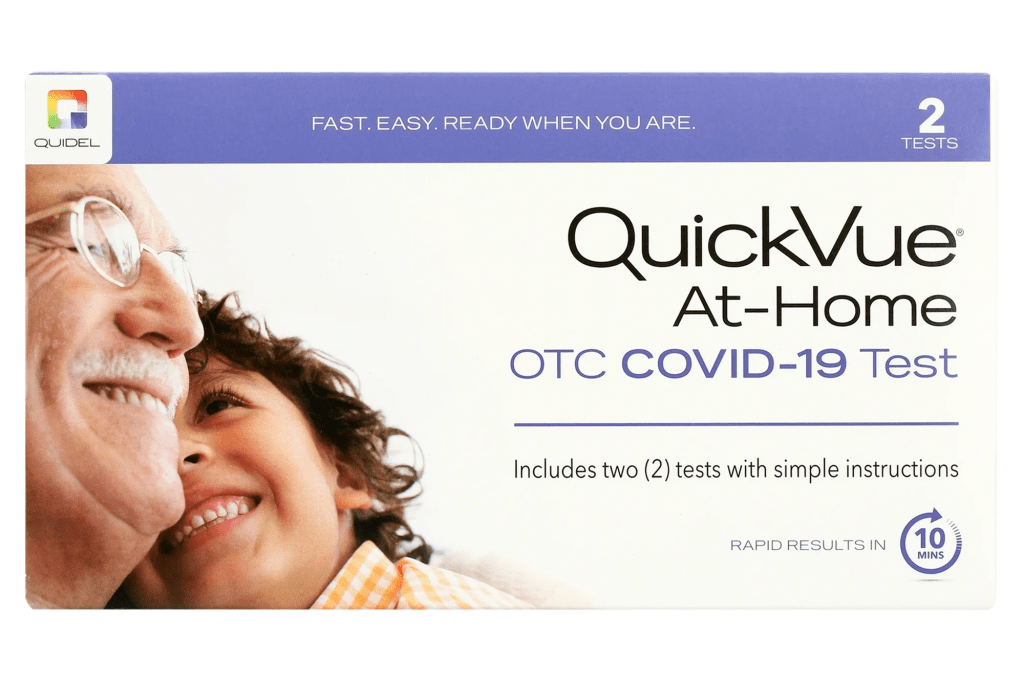
Pros:
- 10-minute results
- Easy to use
- Two tests per kit
Cons:
- Results may read invalid if there’s an efficient sample on the swab
This simple at-home test is authorized for non-prescriptive home use with self-collected direct anterior nasal (NS) swab specimens from individuals aged 14 and older, and with adult-collected anterior NS samples from those 2 years or older.
It’s most effective within six days of symptoms or 24 to 48 hours after suspected exposure.
Easiest to Use: InteliSwab COVID-19 Rapid Antigen Test
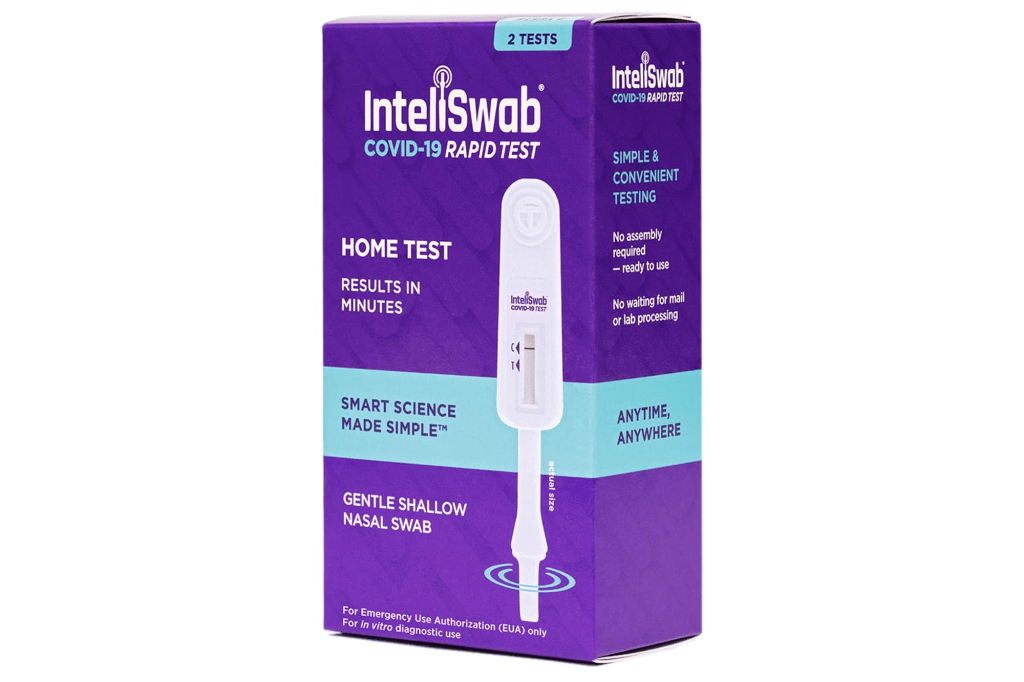
Pros:
- Features a shallow nasal swab for a more comfortable testing experience
- No drops to measure
Cons:
- Results take 30 minutes, which is significantly longer than other tests in our roundup
This test requires less than one minute of hands-on time. InteliSwab has received FDA Emergency Use Authorization for self-testing. You do not need to ship samples to a lab or get a prescription from your healthcare provider. Get your result in 30 minutes.
An FAQ on At-Home COVID-19 Tests
How to use at-home COVID-19 tests
Of course, read the complete manufacturer’s instructions for use before starting the test and make sure you talk to a healthcare provider if you have questions about the test or your results. Here are general steps to take a self-test, according to the CDC.
- Wash your hands with soap and water for at least 20 seconds.
- Open the box and follow the instructions included with the self-test to collect your own nasal or saliva specimen. (If you don’t collect the specimens as directed, your test results may be incorrect.)
- Perform the steps in the order that they are listed. Some manufacturers may also provide quick reference guides or instructional videos.
- Collect either a nasal specimen or saliva specimen, depending on the self-test being used.
- Next, wait to see what result comes back. Generally, this takes 15 minutes.
How reliable are at-home COVID tests?
Invalid test results are rare but can occur. Chief Infection Control Officer Roy Chemaly, M.D. at the University of Texas MD Cancer Center said, “The tests are only accurate 80% of the time, and sometimes less.”
Sometimes invalid results or an error can show on the test device. Invalid results or an error can occur for many reasons — your specimen may not have been collected correctly, or the test may have malfunctioned.
Due to the current infection rate of the coronavirus being so high, many professionals suggest retesting with a PCR test if you have symptoms and test negative using an at-home antigen test as it could be a false negative.
Are old COVID-19 tests still accurate?
At-home COVID tests come with expiration dates, which are important to heed for both accuracy and reliability. As with any product, the expiration date indicates when the test is guaranteed to perform optimally. After this date, the test’s chemical reagents may degrade or become less effective, potentially leading to false negatives or false positives.
It’s crucial not to rely on expired tests, as they could give misleading results, which could delay diagnosis and potentially endanger your health, especially in high-risk situations. It’s key to know that expiration dates on at-home tests are typically set by the manufacturer based on stability testing. However, in some cases, the expiration date may be extended by the FDA, provided that additional data shows that the test maintains accuracy beyond the original expiration date.
To check whether your test has an extended shelf life, it’s a good idea to visit the manufacturer’s website or look for updates on the FDA’s list of authorized COVID tests. This may help you decide if your test is still usable, especially if it’s only slightly past its original expiration date.
What are the 2025 symptoms of COVID-19?
As of 2025, COVID-19 symptoms continue to vary depending on the individual, the variant of the virus, and any underlying health conditions. However, the core symptoms of COVID-19 remain largely similar to those seen in previous years. The most common symptoms include:
- Fever or chills: A higher body temperature, often accompanied by chills, is one of the most recognizable signs of infection.
- Cough: A dry or productive cough is frequently reported and can be persistent.
- Shortness of breath or difficulty breathing: This is especially concerning if it becomes severe, indicating potential lung involvement.
- Fatigue: A deep sense of tiredness or weakness is common, often lasting for several days or weeks in more severe cases.
- Sore throat: Throat irritation or pain can occur, similar to other respiratory infections.
- Muscle or body aches: Widespread soreness and muscle pain are also common.
Do old COVID-19 tests detect new variants?
Old COVID-19 tests, especially PCR and antigen tests, are generally designed to detect the presence of the virus itself, not a specific variant. In most cases, these tests should still detect newer variants, as they target parts of the virus that remain relatively unchanged, such as the nucleocapsid protein or specific genes. However, their accuracy and sensitivity may be affected by the evolution of the virus over time.
For PCR tests, which are highly sensitive and can detect small amounts of viral genetic material, the likelihood of detecting new variants remains high. PCR tests typically target several regions of the virus’s genome, and as a result, they are less likely to miss infections caused by newer variants. Even though the virus may mutate, the PCR tests are generally designed to detect multiple regions that do not change significantly across variants, making them effective across different strains, including Omicron or other variants that have emerged.
How to read an at-home COVID-19 test, step-by-step:
Before you begin, ensure you follow the instructions on your particular test and wash your hands. As per the kit’s instructions, you’ll likely insert a swab into your nose, then place it in a liquid solution (or directly insert the test strip into a sample).
Understand Your Test Device (Result Window)
The test device will typically have a control line and a test line. The Control Line (C line) confirms that the test is working. It should appear regardless of whether the test is positive or negative. If no line appears in the “C” area, the test is invalid, and you should repeat the test with a new kit.
The Test Line (T line) indicates whether or not you have COVID-19. The appearance of this line will vary depending on the test, so be sure to read the instructions of your particular kit.
It’s essential to read the results within the recommended time window, which is usually between 15 to 30 minutes after performing the test. If you wait too long, the results may be inaccurate, and the appearance of lines could be due to false positives caused by evaporation.
Sometimes, a faint line may appear in the T region. Even if it’s faint, if a line is visible, the result is considered positive. The intensity of the line can vary depending on the amount of virus in the sample, but the key takeaway is that any visible line in the T area means the test is positive.
A few things to note:
- Select at-home covid tests are FSA and HSA-approved.
- The tests listed in this article go in and out of stock often so make sure to check back regularly if some aren’t available at this given time.
Why Trust Post Wanted by the New York Post
For over 200 years, the New York Post has been America’s go-to source for bold news, engaging stories, in-depth reporting, and now, insightful shopping guidance. We’re not just thorough reporters – we sift through mountains of information, test and compare products, and consult experts on any topics we aren’t already schooled specialists in to deliver useful, realistic product recommendations based on our extensive and hands-on analysis. Here at The Post, we’re known for being brutally honest – we clearly label partnership content, and whether we receive anything from affiliate links, so you always know where we stand. We routinely update content to reflect current research and expert advice, provide context (and wit) and ensure our links work. Please note that deals can expire, and all prices are subject to change.
Check out the New York Post Shopping section for more content.








